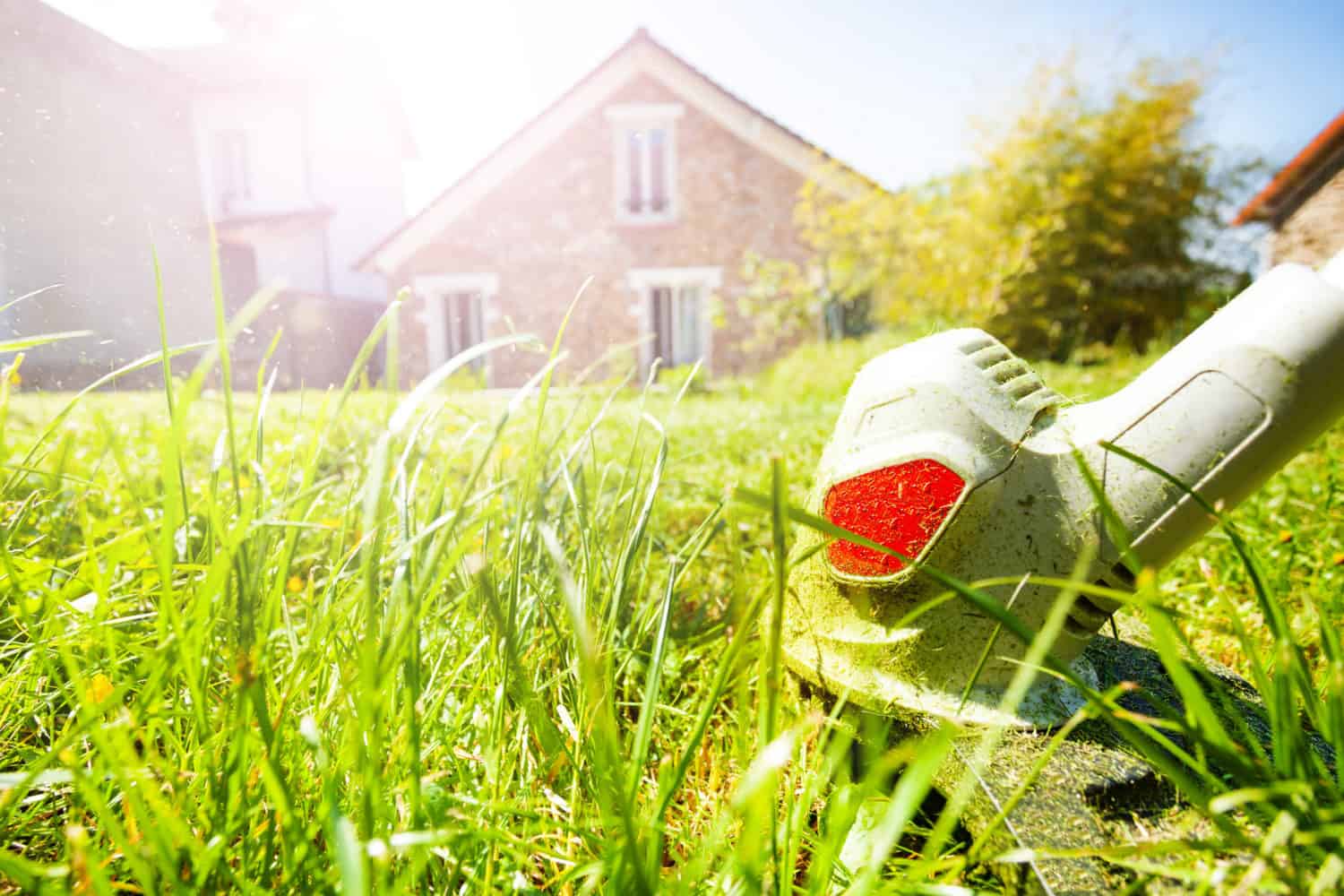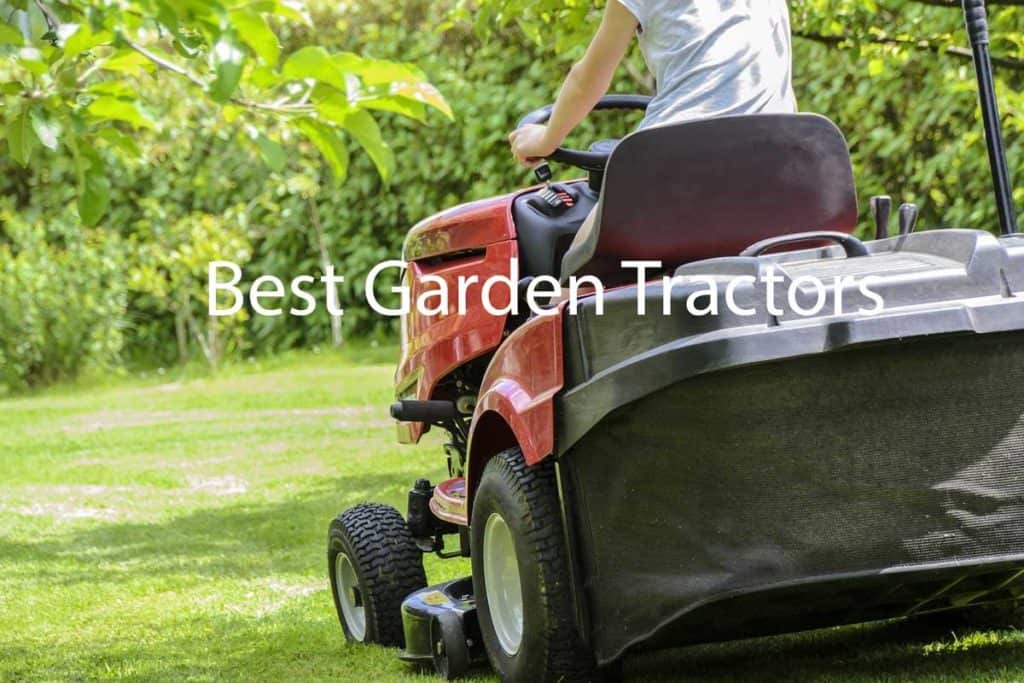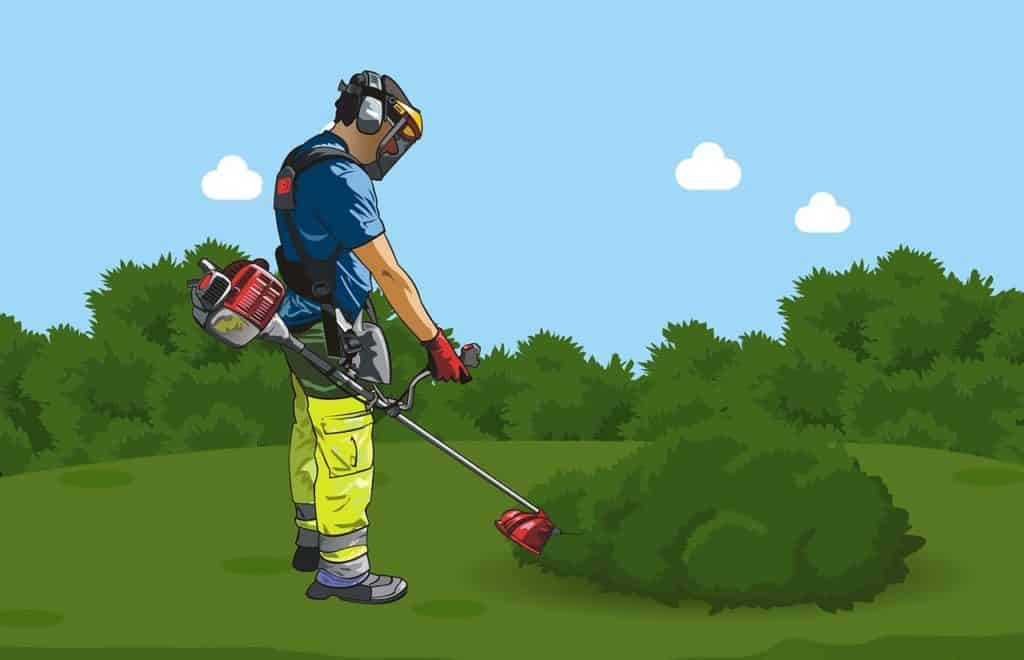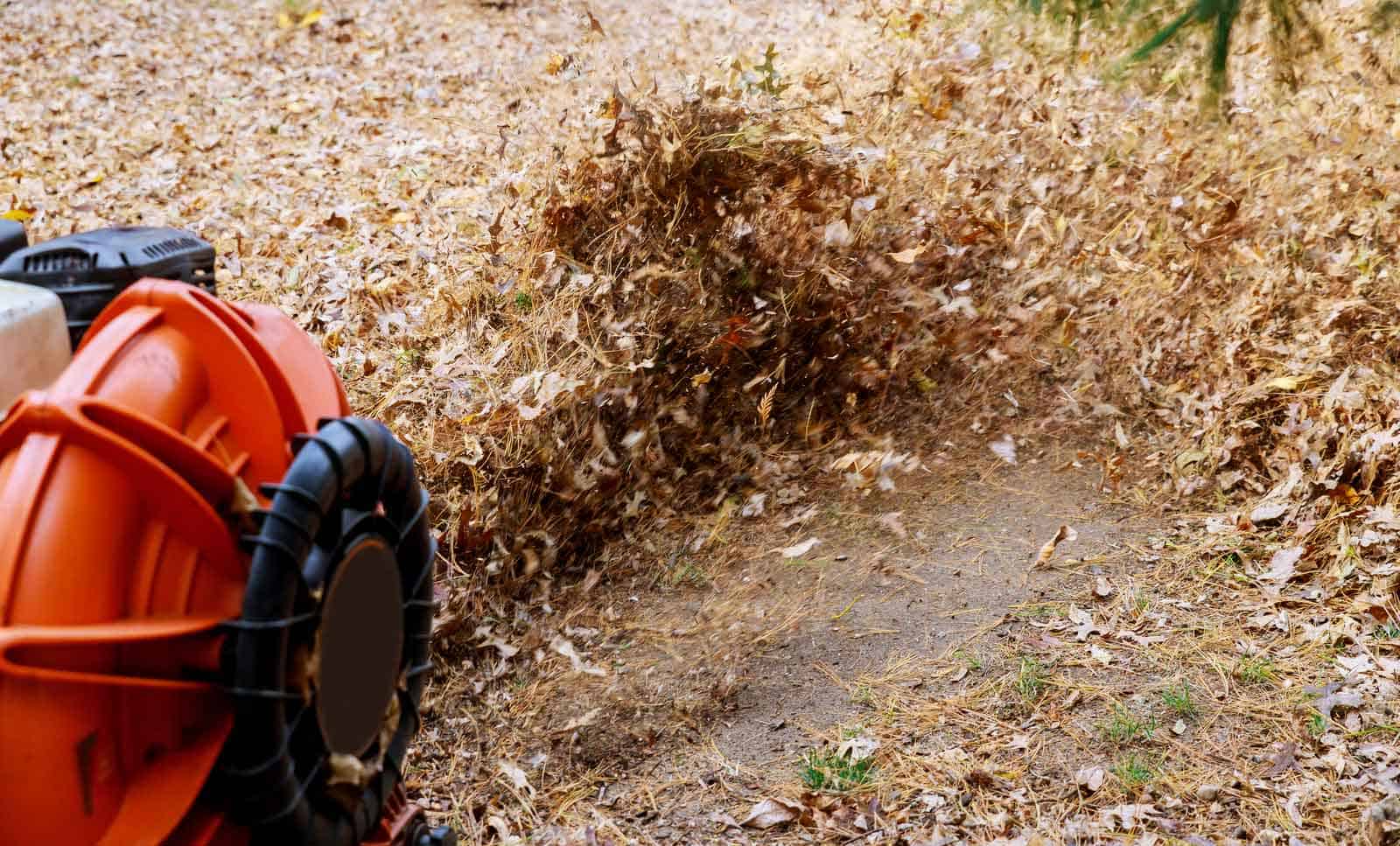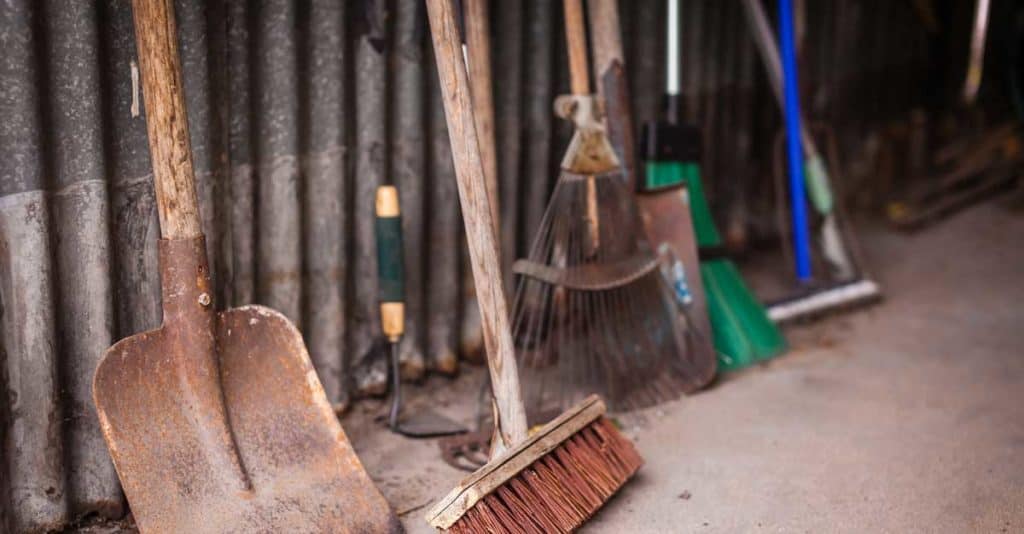Lawn care is all but an easy job. A lot of people think that all one has to do is turn on the lawnmower and cut the grass. However, it takes a lot more effort to achieve a lush, attractive lawn. Besides the lawnmower, herbicides, fertilizers, and watering systems, a homeowner who wants to give his lawn an impeccable look needs to use many other garden tools.
And when it comes to these “other tools”, lawn edgers and string trimmers are certainly the most popular. However, due to the fact that these two types of tools have similar uses, like taking care of edges and areas that mowers can’t reach, they can be easily confused.
This is also why a lot of people use a string trimmer for a job that requires the use of a lawn edger and vice-versa. While they’re both designed to cut the grass and weeds, string trimmers and lawn edgers produce different results – each tool was made to complete a specific task faster and easier than its counterpart.
In order to achieve a well-manicured, tidy lawn, you’ll need to learn what makes these tools different from each other and when is the right time to use your string trimmer or lawn edger (or both). Keep reading to find the answers to all of your questions concerning the topic called string trimmer vs lawn edger.
Contents
What’s a Lawn Edger?
A lawn edger is, as its name suggests, a simple yet effective tool used to define the edges of one’s lawn and separate it from sidewalks, driveways, pathways, garden beds, and similar areas.
Every lawn edger has a blade that is used for cutting overhanging grass and weeds in order to perfectly separate one’s lawn from paved areas. In simple terms, it’s a powerful tool that effortlessly creates edges inside and around your yard. It can be manual or motorized.
Types of Lawn Edgers
Just like string trimmers, lawn edgers come in electric-powered and gas-powered variants. Those who don’t want to use electric-powered or gas-powered edgers will be pleased to know that the market also offers manual edgers.
Manual Lawn Edger
Many homeowners prefer to use manual edgers, mostly due to the fact that they’re exceptionally simple and easy to use. They are separated into roller-based and spade-based edgers. Roller-based models have spike-covered wheels while the spade-based ones look like a mixture between an ax and a spade.
Besides the fact that they’re incredibly simple, manual edgers are also very durable and don’t require as much maintenance. In addition, they’re a good choice for folks looking to save money, since they’re less expensive. With a lawn edger of this type, you won’t need to worry about replacing parts, finding an outlet, or refilling gas. These edgers can be used anywhere and anytime.
On the other hand, drawing a line between the grass and the sidewalk with a hand-operated edger requires more effort. Edging a large yard with these types of devices is not recommended. If you have a sizable lawn, your best bet is to go with a gas-powered or corded/cordless electric lawn edger.
Gas-Powered Lawn Edger
Do you have a large yard with plenty of unwanted vegetation around its edges? If so, your best choice for edging is undoubtedly a gas-powered lawn edger. After all, cutting the grass along the edge of a large lawn would be too taxing with a simple, hand-operated edger.
However, an important thing to keep in mind here is that taking care of the lawn’s edges with a gas edger can be tiring as well. Unlike corded or cordless (battery-powered) models, a gas edger will always be heavy. In addition, these machines make a poor choice for those looking to save money, as the higher power they offer comes at a higher price.
To make edging with a gas edger a bit easier, look for a model that’s equipped with a fourth wheel. Whether you decide to go for a 2-cycle or 4-cycle machine, this fourth wheel will make the edger more stable and allow you to get that clean edge without much effort.
Electric-Powered Lawn Edger
Some folks want their grass-cutting sessions to be as quiet as possible. If you’re looking for a quieter alternative to gas edgers, your best bet is to get an electric edger. It’s an easy-to-use machine that will help you get that clean edge by combining the benefits of gas and hand-operated models.
Obviously, these machines can be separated into two categories – corded and cordless (battery-powered) models. The ones powered by a battery are just as portable as the other types, but they’re not as powerful as the gas models are. Corded edgers, on the other hand, offer more power than their cordless counterparts but aren’t as mobile.
Both types are quiet, small, lightweight, and will allow you to cut the grass along the edge of your lawn without much effort. However, they’re not as powerful as gas edgers – working on an edge of a lawn filled with thick weeds can be quite challenging when you’re using an electric model.
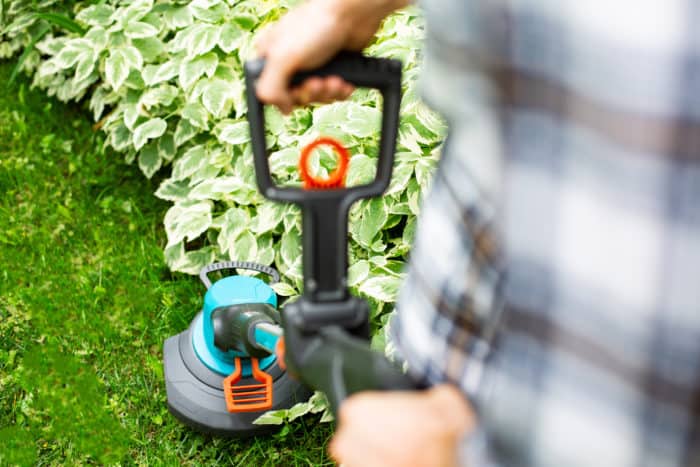
When Should I Use a Lawn Edger?
Sometimes, a yard will look messy even after you’ve mowed and raked it. Even after you do these things, your yard simply won’t sport that eye-catching, manicured look if you don’t take the time to cut the grass along every edge and create a straight line that separates the grass from concrete.
A lawnmower won’t really help you with the edges – its blade can’t mow the sides of pathways, sidewalks, driveways, and other paved areas. In addition, a machine of this type can’t be used to cut the weeds around shrubs or near fences without damaging them.
If you would like to see a defined, crisp edge on each side of your lawn, you should definitely get a lawn edger. These machines are made to create sharp, clean edges between paved surfaces and grass. You may also utilize one of these tools to fix the edge of your flower beds and for edging around your mailbox, making the dividing line look aesthetic.
To put it simply, the blade of this handy tool can be of great assistance whenever you want to make your garden look neat and well-kept.
What’s a String Trimmer?
String trimmers are easy-to-use and lightweight machines used for removing weeds and grass. A string trimmer is also often called weed wacker, weed eater, and line trimmer.
This machine consists of a long shaft with a handle on one end and a rotating head on the other. Unlike the lawn-edging devices, a string trimmer doesn’t have a blade. Instead, it is using a string, which is a flexible line made out of plastic that rotates at a high velocity. This is why it’s very important to wear boots, gloves, glasses, and other protective gear when using a string trimmer.
As mentioned above, all string trimmers have shafts. These can be either curved or straight. A lot of people consider curved shafts to be more comfortable to hold. Straight shafts, on the other hand, make it easier to cut the weeds under shrubs and around fences due to their length.
Types of String Trimmers
String trimmers can be separated into two basic categories – electric string trimmers and gas string trimmers. The electric string trimmers can be further divided into cordless and corded electric string trimmers.
Choosing the right kind of string trimmer should depend on your preferred noise level, portability, and power, as well as on the size of the property that requires trimming.
Gas-Powered String Trimmer
As you can probably already guess, this type of string trimmer is more powerful than the models powered by electricity. In addition, a gas-powered string trimmer will typically have a large trimming swath, which turns this tool into the right choice for large lawns. Gas trimmers also sport a longer run time than the other types of trimmers, especially battery-powered ones.
Comparing a typical gas string trimmer vs edger in terms of noise shows us that gas-powered trimmers tend to be much louder. Obviously, they also produce more noise than the electric trimming and edge-cutting devices. Getting a trimmer of this type means that you’ll need to refill it with oil and gas, and they’re also more expensive than the other types – just like in the case of edge cutters.
Corded Electric String Trimmer
Those with smaller yards may want to opt for a string trimmer of this type. Unlike their gas-powered cousins, these trimmers don’t emit fumes and don’t produce as much noise. And while they’re very good when it comes to efficiency and ease of use, you can’t get far with them as they’re using extension cords.
In addition, this tool isn’t that powerful and provides smaller trimming swaths. In other words, you would need to have a lot of outdoor outlets and a long extension cord to clean a large yard with one of these trimmers.
Cordless Electric String Trimmer
It goes without saying, but the cordless electric trimmer is undoubtedly the most portable solution to anyone’s weed-removal needs. Even though these machines are far less powerful than their gas-operated cousins, they are still quite efficient and can help you take care of your small lawn.
The downside is pretty obvious – these devices use batteries. In other words, you’ll have to stop from time to time to take out the battery pack and recharge it. To increase the machine’s run time, get yourself a spare battery pack. You might want to check out my post on the best cordless hedge trimmer as well.
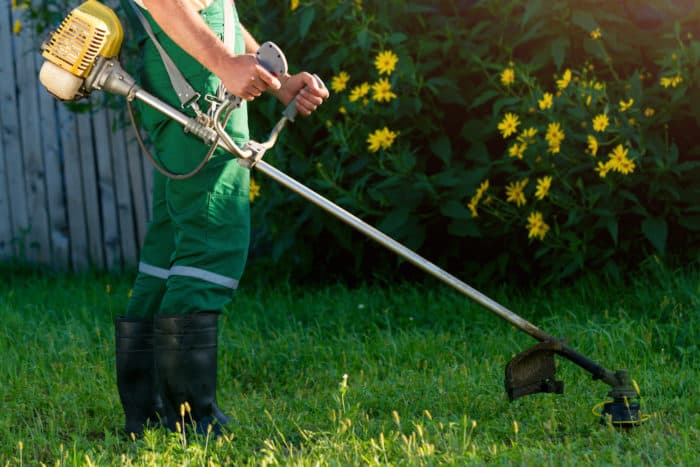
When Should I Use a String Trimmer?
In the battle called edger vs trimmer, the second option is certainly far more versatile. A lawn edger can only be used to create a tidy and sharp edge between a paved surface and your lawn.
Even though it doesn’t have a blade, a string trimmer can be used for edging as well – but also to mow entire areas of grass and weeds near pathways, driveways, sidewalks, steps, and fences. However, keep in mind that trimmers can’t really achieve a perfectly crisp edge as the regulars edgers can.
In addition, due to its small trimming width, a trimmer can never completely replace a regular mower. If you’d really like to get the best out of your lawn, you’ll use each of these three devices when and where they’re needed – the mower for regular mowing, the trimmer for spots that the mower can’t reach, and the edger to maintain the edge on each side of your lawn.

